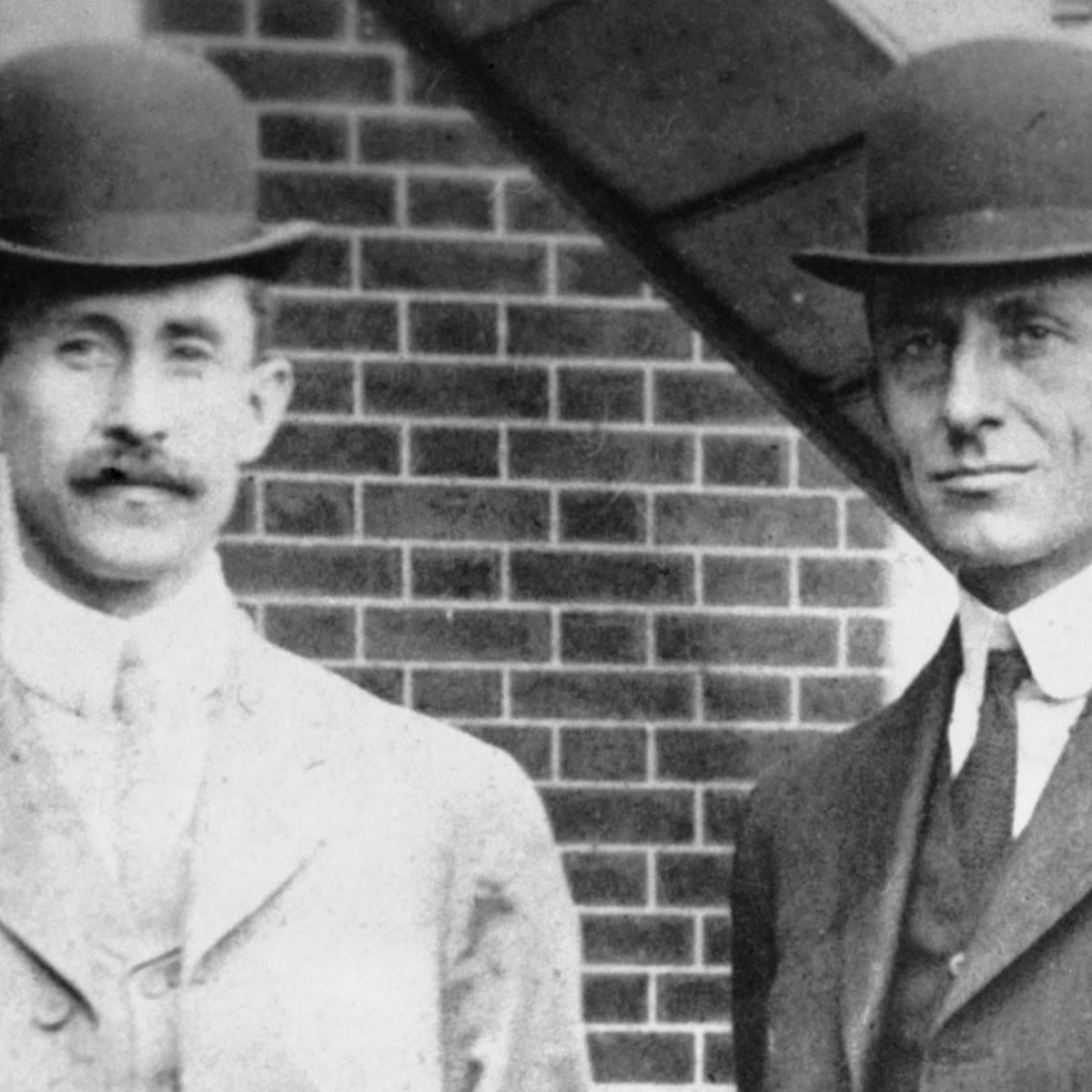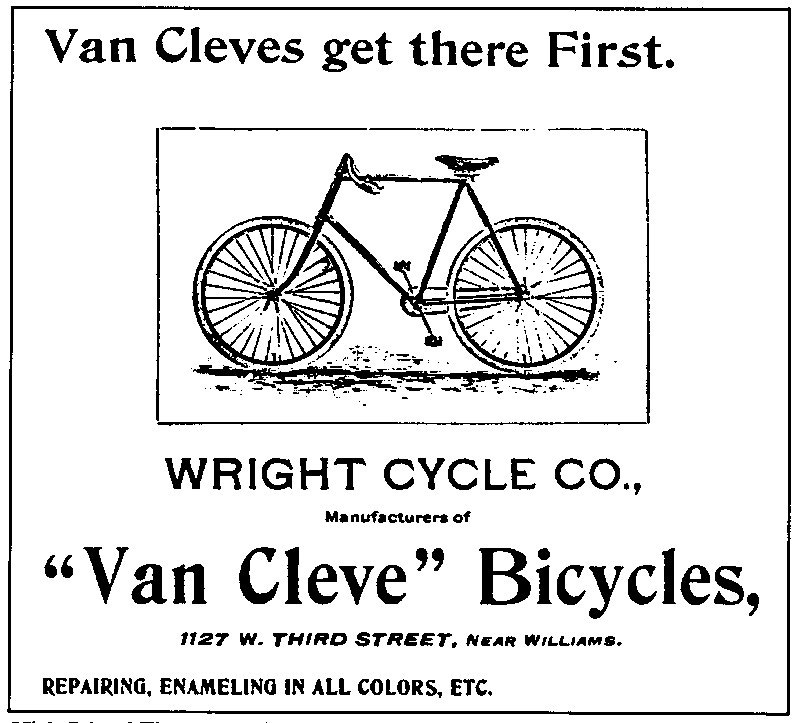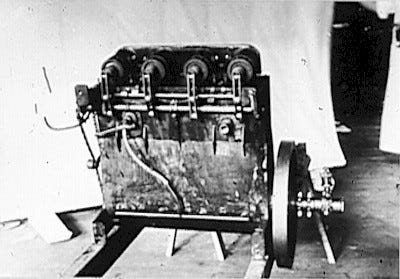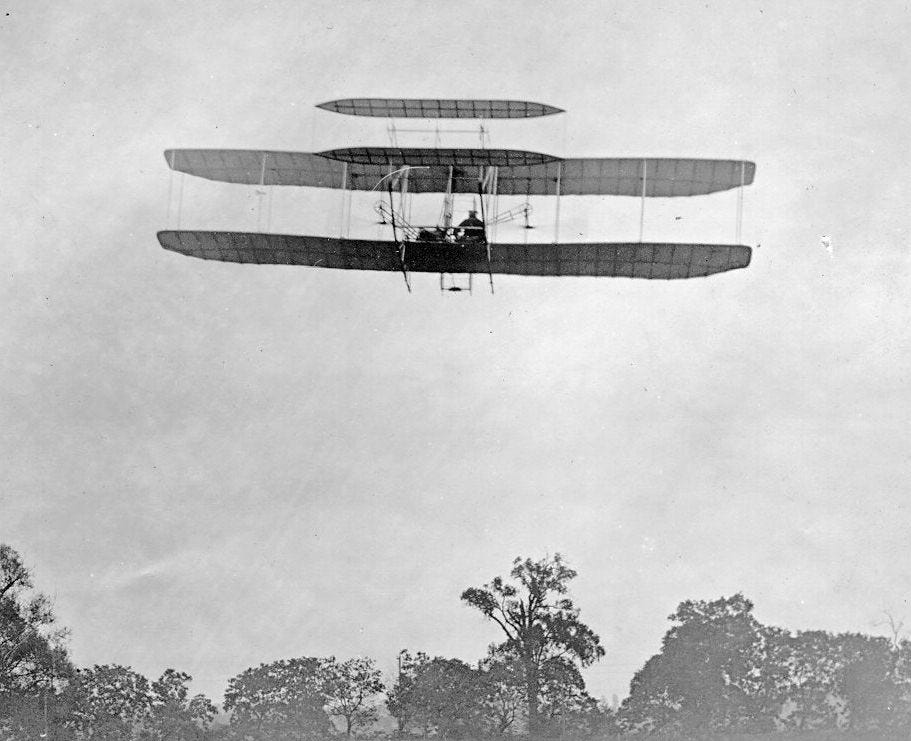Morning,
There are times when I get curious about something but it may only last a day, a week, or even a month. You know when you cut an apple and it turns brown. Inspiration is exactly like that. It expires and perishes so quickly.
My “apple” curiosity about flying is at another level. No matter how much I “cut it”, it doesn’t go bad, it gets tastier and tastier. Why? I don’t know and I don’t care. I will pursue this obsession endlessly. Pursuing your obsessions without “rational” or “effective” questioning has to be one of the most beautiful things in life.
I’m continuing to teach myself everything on flying from hidden history to hardcore engineering. This week I obsessed with the difference between heavier-than-air and lighter-than-air, which led me to the lift equation, airfoil physics, and wing design. Also, it turns out, that we don’t know why planes stay in the air. I’ll be thinking about it this week.
The Drone Project? It’s embarrassing haha. I built the whole thing and then I realized I couldn’t fly because 1) I didn’t have a controller or 2) the antennas. The video I found was clickbait and only showed how to build the drone but didn’t say you needed a controller to fly it!!!!!
🫠
Partly, it’s my fault because I asked myself the question, “How is this thing going to fly?” But I was too excited and ignored it. Now, I need to find the cheapest antenna and controller that work with my flight controller. Ideally, I would use an app and call it a day. r/drones will come in handy.
That’s it on that side. What’s the future of the newsletter since I won’t be writing the typical essays for a while? I will be writing updates/reflections like the one you just saw and excerpts from the mega essay I’m writing on flying. As always, I’m grateful for your support and I thank you for reading.
This week? Let’s start with the Wright Brothers.
A Brief History of The Wright Brothers
This essay draft is part of an upcoming mega essay (or book) of an exploration of teaching myself everything on flying from hidden history to hardcore engineering.
In 1894, Progress in Flying Machines by Octave Chanute was published. This book was the most structured and methodical global survey of fixed-wing heavier aviation research one could find. It was a book that gathered and analyzed all the technical knowledge one could find. This was also a book the Wright Brothers used as a basis for their experiments.
Chanute was in contact with the Wright Brothers when Wilbur wrote to him after reading his book. Chanute often commented on their technical progress, publicized their work, and visited their Kitty Hawk camp. Between 1900 and 1910, they exchanged hundreds of letters. Towards the end of Chanute’s life, their relationship became sour as Chanute did not believe the Wright flying machine patent could be enforced. Chanute freely shared his knowledge and expected others to do the same.
And now we get to the Wright Brothers.
A group of bicycle shop owners and high school dropouts who didn’t go to college [1] and who one day decided to get obsessed with flying. The Wright Brothers were always working on mechanical projects and keeping up with scientific research. This is when they discovered the research of Otto Lilienthal whom they closely followed. When Lilienthal died in the glider crash, the brothers decided to start experiments with flight.
Orville and Wilbur Wright were committed to making their dream of flight true so they went down to Kitty Hawk, North Carolina, a region known for its strong winds.
First, they started by reading all the early developments of flight. They were trying to figure out how to design wings for flight. They observed that birds angled their wings for balance and control and they wanted to replicate this. They began experimenting by twisting their wings in flight, a concept called “wing warping.”
The obvious next step was to test the shapes of gliders. They spent three years researching and learning about gliders at Kitty Hawk, Noth Carolina. They studied things such as the precise curve of the wing profile, the wing area necessary to lift a pilot, and the type of materials needed to construct a glider.
This was important because no one really understood the mysterious control problem of gliders, especially the issues they experienced in 1901 when they build the biggest glider yet, which suffered from a lack of lift and control problems.
They designed and used a wind tunnel to test the shapes of the wings and tails of the gliders. In 1902, they figured out the glider shape they wanted to use and now turned their attention to how to create a propulsion system that would create enough power for the machine to fly.
To achieve this, they designed a 12-horsepower engine. For reference, this is the same power as two hand lawn mower. At the time, most people thought you needed a more powerful engine.
Wing design and propulsion figured out, there was the step of building and flying the airplane. They built this plane using wood and fabric which was braced with steel wire. This gave it a good balance between lightness and strength.
The Wright Brothers constructed the aircraft at their bicycle shop in Dayton, Ohio, and sent it by rail to Kitty Hawk for the flight trail.
At 10:35 AM on December 1903, the “Flyer” lifted from the ground and piloted this 750-pound plane.
This plane traveled 120 ft in 12 seconds the first time and even got to fly 850 ft in 59 seconds on the fourth and last flight. The Flyer was unstable and hard to control.
The brothers returned to Ohio and worked for two more years on their design. Then in 1905, the Flyer III flew for 39 minutes and 24 miles. He flew this plane until it ran out of gas.
After this, humans were now able to fly. During the 1900s, flying was possible and became trivial. Something everyone thought to be crazy and unpractical. That’s why engineers or scientists didn’t really think it was possible but maybe they just needed to try and try and try. And more importantly, getting their hands dirty to have a first-hand experience, not a classroom experience.
The Wright Brothers were the last people you’d think would solve such a problem so why were they ones? Where were the MIT geniuses?
The Wright Brothers didn’t go to a fancy college nor had prestigious mechanical/aerospace engineering degrees but that is an important reason they were the few people in the world capable of solving the flying problem.
The Wright Brothers had a shop in Ohio that allowed them to learn mechanical skills with printing presses, bicycles, motors, and other machines.
The work with bicycles was probably the most important because it shaped how they wanted to work through the problem. They believed that an unstable vehicle like a flying machine could be controlled and balanced with practice just like you would when you ride a bike. That belief is why you’ve heard of the Wright Brothers, and not about the others.
After this breakthrough, many new airplanes and designs were developed for all purposes such as transporting people, cargo, and weapons. These advances were all based on the first flight by the Wright Brothers.
The Wright Brothers were not only influential in getting a flying machine into the air but also in the approach they used to create the flying technology. Their method could be summarized by flying aircraft, gathering data, and refining the design based on those results. A method that still remains essential in aerospace research and development.
Orville and Wilbur invented, built, and flew the first successful motor airplane and the first to invent aircraft controls and the three-axis control system.
Wilbur died about 10 years after the successful invention because of a typhoid fever. Orville, however, died about 40 years after his brother. Orville lived from the very start of flying to the very peak of supersonic flight.
Human progress is beautiful and worth living for.
I launched my first “rocket.”
Designing a paper rocket is harder than it seems but you can only know until you try it.
Let’s fly-rocket-and UFO,
Juan David Campolargo
🎵 Song I listened to while writing this: Show Me.









